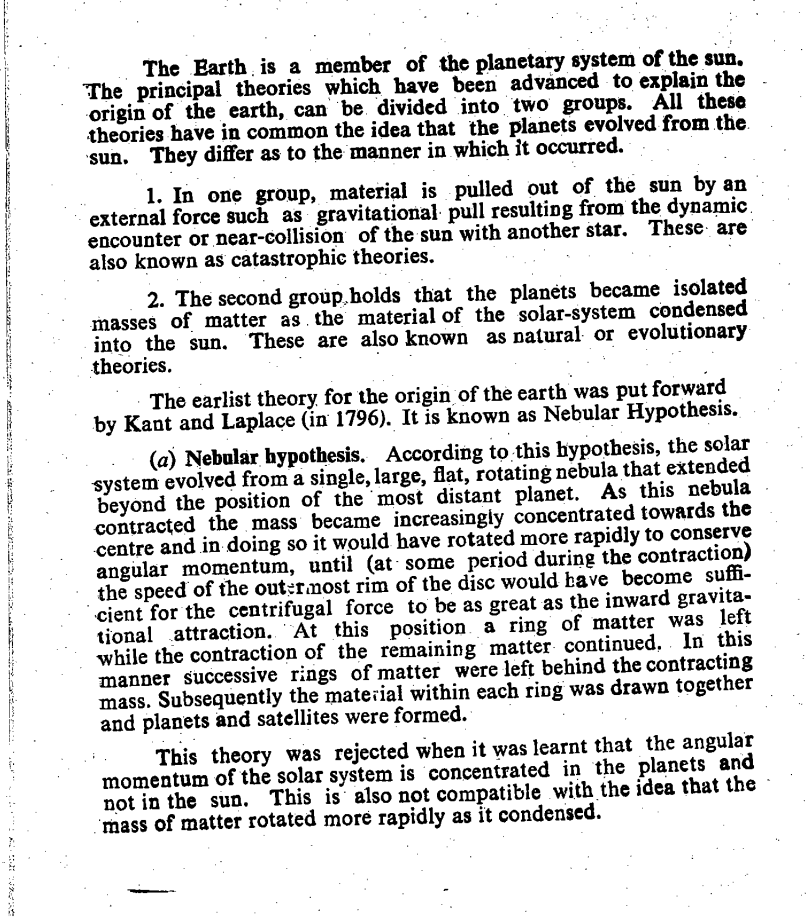What is the Nebular Hypothesis and how does it explain the origin of the Earth?

Understand the Problem
The question discusses theories related to the origin of the Earth, particularly focusing on the Nebular Hypothesis and its implications for the solar system's formation.
Answer
The Nebular Hypothesis posits that the solar system formed from a rotating nebula, which collapsed under gravity, spinning faster and flattening into a disk, leading to the formation of the Sun and planets.
The Nebular Hypothesis suggests that the solar system developed from a single, large, rotating cloud of gas and dust, called a nebula. As the nebula collapsed under gravity, it spun faster and flattened into a disk. Over time, this disk material formed the Sun and planets.
Answer for screen readers
The Nebular Hypothesis suggests that the solar system developed from a single, large, rotating cloud of gas and dust, called a nebula. As the nebula collapsed under gravity, it spun faster and flattened into a disk. Over time, this disk material formed the Sun and planets.
More Information
The Nebular Hypothesis, initially proposed by Kant and Laplace in 1796, is widely accepted today despite some historical revisions. This model accounts for the distribution of angular momentum and the formation of planetesimals.
Tips
A common mistake is not considering the conservation of angular momentum in the collapse of the nebula or not recognizing the transition from a nebular disk to discrete planetary bodies.
Sources
- Nebular hypothesis - Wikipedia - en.wikipedia.org
- Origin of the Solar System - The Nebular Hypothesis - geo.libretexts.org
- The Nebular Theory – Introduction to Astronomy - FSCJ Pressbooks - fscj.pressbooks.pub
AI-generated content may contain errors. Please verify critical information